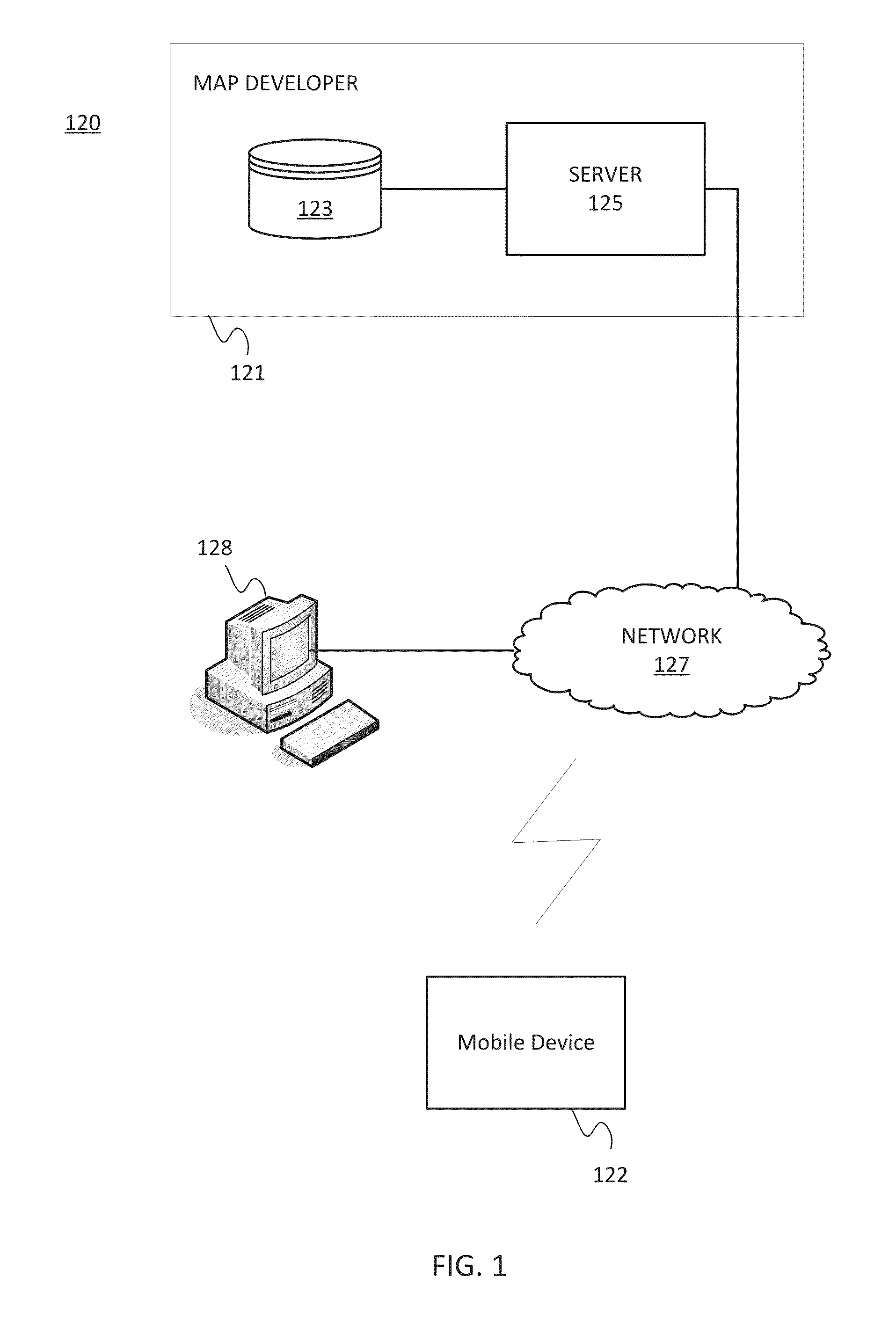Deviation detection in mobile transit systems
a technology for mobile transit and detection of deviations, applied in surveying and navigation, instruments, navigation instruments, etc., can solve problems such as delays, deviating from schedules, and transit vehicles delaying buses,
- Summary
- Abstract
- Description
- Claims
- Application Information
AI Technical Summary
Benefits of technology
Problems solved by technology
Method used
Image
Examples
Embodiment Construction
[0017]The following embodiments include the detection in real time of when and where a mobile transit object deviates from a scheduled route or a historical route. The scheduled route may be a series of estimated times paired with geographic locations for transit stops or stations. The historical route may be an average of recorded times and / or geographic locations from past routes on the transit system. The deviation may be either spatial or temporal. Once the deviation is identified, the deviation may be utilized to choose a new route or derive the new route for display to users. In addition, the deviating location points may be used to construct a new route leg, a new stop, and / or new schedules for the transit system. The new information may be transmitted to users or the transit system administrator.
[0018]FIG. 1 illustrates an exemplary navigation system 120 for route deviation detection. The navigation system 120 includes a map developer system 121, a mobile device 122, a works...
PUM
 Login to View More
Login to View More Abstract
Description
Claims
Application Information
 Login to View More
Login to View More - R&D
- Intellectual Property
- Life Sciences
- Materials
- Tech Scout
- Unparalleled Data Quality
- Higher Quality Content
- 60% Fewer Hallucinations
Browse by: Latest US Patents, China's latest patents, Technical Efficacy Thesaurus, Application Domain, Technology Topic, Popular Technical Reports.
© 2025 PatSnap. All rights reserved.Legal|Privacy policy|Modern Slavery Act Transparency Statement|Sitemap|About US| Contact US: help@patsnap.com



